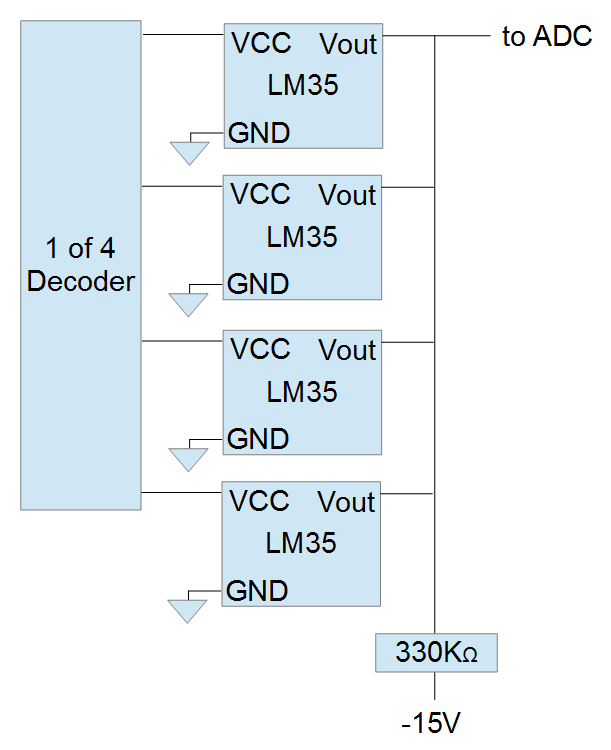The LM35 datasheet specifies absolute min/max output voltage as -1/+6 V. However, the absolute max junction temperature is 150 C, so:
1. How could the LM35 ever drive the Vout pin higher than +1.5 V (10 mV x 150 C), let alone anywhere near +6 V?
Similarly, I presume the operating temperature must never fall below the absolute min storage temperature of -65 C (resulting in Vout = -650 mV), so:
2: Under what circumstances would a normally-operating LM35 allow Vout to be pulled below -650 mV, let alone down to -1 V (assuming absolute max output current not violated)?
If the LM35 cannot output -1 or +6 V itself, I assume these limits are relevant only when Vout is externally driven.
For example, when the LM35 is powered, it seems like it would be safe to connect Vout to +5 V because Vout can only source current, and +5 V doesn't exceed the absolute max +6 V.
3. Is this correct?
4. Is this still safe to do when the LM35 is unpowered?
Finally, when the LM35 is unpowered:
5. Is it safe to externally drive Vout to a negative voltage (e.g. -500 mV) which does not violate the absolute min -1 V?
I'm asking these questions because I want to multiplex four LM35 outputs in the following way.



